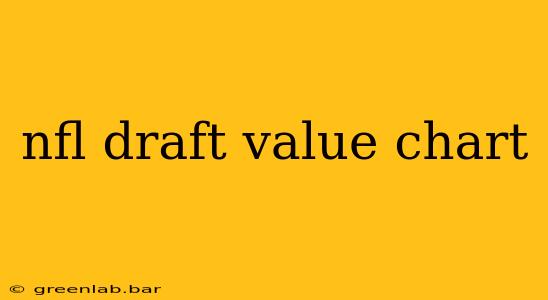The NFL Draft is a complex event, a high-stakes game of strategy and calculated risk. Teams spend months scouting, analyzing, and projecting the potential of hundreds of college players, all in the hope of finding the next franchise cornerstone. Central to this process is the NFL Draft Value Chart, a tool used to evaluate the relative worth of each draft pick. This guide will delve deep into the intricacies of these charts, explaining their creation, application, and limitations.
Understanding the NFL Draft Value Chart
At its core, an NFL Draft Value Chart assigns a numerical value to each draft pick, reflecting its perceived worth. Higher values generally represent picks in earlier rounds, reflecting the increased potential and perceived impact of those selections. These values aren't arbitrary; they're typically derived from sophisticated statistical models that consider factors such as:
- Historical Success Rates: Analyzing the long-term performance of players drafted at various positions and rounds.
- Positional Value: Accounting for the inherent value of different positions. A quarterback prospect, for example, typically holds significantly more value than a late-round kicker.
- Draft Capital Trade-offs: Determining the appropriate compensation for trading up or down in the draft. A team might be willing to surrender multiple lower-round picks to secure a higher-value player.
Several variations of the NFL Draft Value Chart exist, with the most commonly cited being those developed by Jimmy Johnson and others refined over the years. These charts are not static; they evolve as the game changes and as new data becomes available.
Key Considerations When Using a Value Chart
While a value chart provides a valuable framework for decision-making, it's crucial to acknowledge its limitations. It's not a perfect predictor of future success, and it shouldn't be the sole determinant of a team's draft strategy. Several factors need to be considered alongside the chart:
- Team Needs: A team might prioritize a player who fills a critical need, even if the chart suggests a lower-value pick.
- Player Potential: A high-upside player might warrant selecting them even if the chart suggests a less valuable position.
- Scheme Fit: A player's skill set must align with the team's offensive or defensive schemes.
- Intangibles: Character, work ethic, and leadership qualities can significantly impact a player's success, and these qualities are difficult to quantify.
Common NFL Draft Value Charts and Their Variations
The most well-known NFL Draft Value Chart is often attributed to former Dallas Cowboys coach Jimmy Johnson. His chart, and its variations, uses a point system to assign values to each pick, with the first overall pick usually having the highest point value and the value declining with each subsequent pick and round. These values aren't universally accepted, and different teams might use modified versions, incorporating their own data and insights.
Beyond the Numbers: The Human Element
While quantitative analysis is crucial, the NFL Draft is ultimately a human endeavor. Scouting departments spend countless hours evaluating players, considering not just their physical abilities but also their personalities and potential for growth. The human element—the ability to identify talent, assess character, and project future performance—remains an indispensable part of the process.
Conclusion: A Tool, Not a Gospel
The NFL Draft Value Chart serves as a valuable tool for teams to make informed decisions. It provides a structured approach to evaluating draft picks and facilitates trades. However, it's important to remember that it's just a tool, not a definitive guide. Successful drafting requires a combination of quantitative analysis, experienced scouting, and an understanding of the unpredictable nature of the game itself. The best teams use the chart strategically, incorporating their own unique perspectives and assessments to build a successful roster.

